The Gist
- The $50B paradox. Despite massive investment, only 36% of organizations successfully implement conversational AI — leaving a 57-point execution gap.
- Agent experience is the missing link. Organizations focus too heavily on tech procurement and too little on designing systems that empower, not burden, human agents.
- Measuring what matters. New frameworks like the Conversational Intelligence Index shift success metrics toward empathy, context retention and human-likeness — not just handle time.
Why are organizations struggling with conversational AI implementation despite investing billions? The paradox is clear: while 93% of organizations recognize the strategic importance of conversational AI, only 36% achieve effective implementation — a staggering 57-point gap.
This gap not only threatens the projected $49.8 billion conversational AI market by 2031 but also exposes a systemic failure in how enterprises pursue customer experience (CX) transformation (MarketsandMarkets, 2024).
Perhaps most alarming, only 11% of organizations achieve truly human-like AI conversations, according to a Capgemini Research Institute study. This gap between ambition and execution represents billions in wasted investment and missed opportunities for differentiation. The solution, however, doesn’t lie in more technology—it lies in reimagining implementation around agent experience as the core success factor.
Related Article: Will Your Agents Buy in to the $50B Conversational AI Market?
Table of Contents
Why Organizations Fail at Human-Like AI Conversations
Most organizations approach conversational AI as a procurement exercise, not a transformation initiative. This results in fragmented solutions lacking cohesive measurement frameworks. Without metrics that assess conversational quality, teams optimize for efficiency instead of engagement.
Common implementation missteps:
- Deploying AI without redesigning underlying processes
- Excluding frontline agents from design and rollout
- Relying on traditional metrics that ignore conversational quality
- Failing to integrate AI and human workflows
These flaws create a cycle of poor performance → skepticism → underinvestment → further decline.
Agent Experience: The Hidden Key to Conversational AI Success
Ironically, many AI tools increase agent workload—through manual transcription, context switching or redundant documentation—rather than reducing it. This undermines the promise of automation.
| Effective Agent Experience Design | Ineffective Agent Experience Design |
|---|---|
| Seamless context transfer | Manual re-entry of data |
| Real-time, contextual AI suggestions | Generic, irrelevant prompts |
| Automated documentation | Manual follow-up requirements |
| AI fully resolves routine inquiries | Partial automation requiring human completion |
| Agent control over AI assistance | Constant, intrusive AI interruptions |
How AI Can Boost Agent Performance—When Done Right
The distinction between AI as surveillance and AI as empowerment determines success. Systems built to support agents win trust; those built to monitor performance breed resistance.
Rethinking Metrics: Beyond Traditional KPIs
Metrics like average handle time or first-call resolution miss what truly defines conversational excellence. Leading organizations now employ Conversational Intelligence Indexes, assessing:
- Human-likeness – natural conversation flow and personalization
- Emotional resonance – ability to detect and manage customer emotion
- Context retention – maintaining coherence across topics and sessions
These measures combine quantitative data with qualitative insights to better align CX objectives with business outcomes.
The Conversational Intelligence Framework
To bridge the 57-point gap, enterprises must measure what matters. The Conversational Intelligence Framework evaluates three dimensions:
- Human-likeness (≥8.5/10) – contextual fluency and personalization
- Emotional resonance (≥90%) – empathy, tone, and congruence
- Context retention (≥85%) – continuity across channels and sessions
High-performing organizations regularly benchmark and refine these scores, establishing continuous feedback loops from both agents and customers.
Strategic Roadmap for Effective Implementation
Best Practices:
- Contextual handoff between AI and humans
- Adaptive assistance based on agent proficiency
- Continuous learning from agent feedback
Vendor Selection Criteria:
- Seamless integration with existing systems
- Customization for agent skill levels
- Proven design methodologies for agent experience
Organizations should view agents as AI collaborators, not end-users. This mindset fosters ownership and accelerates adoption.
The Future of Human-Like Customer Interactions
Next-generation conversational AI will evolve toward relationship management, not mere efficiency. Advances in large language models, real-time sentiment analysis and multimodal interfaces (voice, text, video) will redefine engagement.
In the next five years, CX leaders will blur the boundaries between human and AI interaction—where memory, context and empathy converge in unified, intelligent systems.
Turning Agent Experience into Competitive Advantage
The 57-point implementation gap reflects not a failure of technology, but of strategy and design. Organizations that elevate the agent experience, modernize their measurement frameworks, and integrate systems seamlessly will unlock new levels of performance.
To begin, organizations should:
- Conduct an agent-focused audit of current AI tools
- Implement one conversational intelligence metric within 90 days
- Shift from technology-first to outcome-first planning
The future belongs to those who treat conversational AI implementation as a human transformation initiative—not a software deployment.
Learn how you can join our contributor community.






